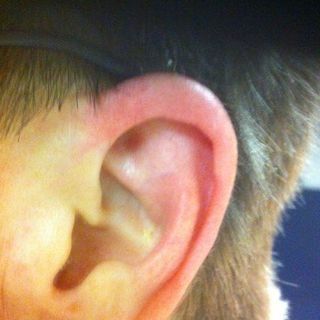 Toastmasters: Learning the Rules
6/22 '19
Toastmasters: Learning the Rules
6/22 '19
This is a reader-focused edit of the speech I recently gave as the capstone of the Dynamic Leadership path in Toastmasters. During the speech, I switched a few things up in response to audience reaction. I broke several of the common rules for Toastmasters speech struture and delivery, every transgression a choice I had deliberately made and weighed in advance.
As I said afterward to the fellow who'd roped me in to serving as the club's VP Education and proceeded to be unavailable to provide promised guidance, support, and backfill over much of the following year: it’s not the speech I wanted to give. It was the speech my audience needed to witness.
Thousands of books, millions of pages, have been written on public speaking. Each resource has a structure, but the number of tips and guidelines and exercises is overwhelming to someone just setting out. How many rules are there for giving a speech?
My friend Linda Carson says there are fewer rules than you think. Linda trains beginning artists to understand and follow rules of composition. In every lesson, she provides guidance to help artists improve in seeing, painting, drawing, sculpture. The rules are important to learn new skills and perspectives, but at some point the training wheels come off. More advanced artists consciously use fewer rules than beginners. If it’s true for visual art, is it also true for the performance art of public speaking? Come with me on a little journey.
Two years ago I was packing up my life and moving. From some perspectives, my plan for the future could have been written on a beer-soaked napkin. I have lifelong friends who are have used Toastmasters to build speaking, writing, and leadership skills. They all encouraged me to join Toastmasters and leverage it to improve my skills and my network in a new city.
At the end of the summer, I joined a Toastmasters club in the neighbourhood where I would live for much of the following year. The members were like a second family to one another. I saw some impressive skills from practiced speakers and leaders. Personal and professional development were actively encouraged through mentoring and effective critique.
When I got my speech craft and leadership manuals, I read them thoroughly. I hunted down guides from the Toastmasters International web site. I studied the rules, watched like a crow at meetings, and prepared. And prepared.
I was so keen on doing well out of the gate that it took me two months to give my Ice Breaker speech, the first prepared speech project in the programme. I would take my first meeting role, noting and reporting on the use of filler words, the following week. In my prepared speech I talked about my childhood. I went more than a minute over time even though I’d practiced. People didn’t seem to mind, but I recognized the need to change from my rambling storytelling to a more concise style.
The Pathways system came out and I decided to give it a spin. I delivered another Ice Breaker about being disabled for a year. I wasn’t too uncomfortable. I didn’t run as much over my allowed time. I kept showing up, taking formal roles every few weeks, volunteering for impromptu speaking when I didn’t have a role. I kept trying, watching, listening. I was slowly improving.
Then I cheated, singing the last 40 seconds of a speech about singing. When I presented the revised version, I stood on my writing and speaking skills alone. I needed to expand my comfort zone, not the audience’s.
I gave a technical talk next. It was loaded with acronyms and detail relevant to IT project managers. Most of the club members weren’t technology workers, so I got to watch people grow increasingly bored, confused, and disengaged. I needed to write and speak in easily understood terms.
The months passed. I kept watching other people’s performances and feedback, getting up on stage, receiving personalized feedback, making and acting on plans for incremental improvement. I was developing skills: learning many rules, mastering one and moving on to the next. Sometimes I connected with a lot of the audience, sometimes just one or two people. I needed to focus on speaking effectively to everyone in the room.
When I became the club’s Vice President of Education almost a year in, it was a huge set of new challenges and a chance to deliver speeches that could help people become better speakers and leaders. I was growing, blossoming. I was continuing to hide my identity in a group that had some fundamental differences from me: a group that has occasionally invited guests from demographics where people like me are not accepted with open minds and hearts.
I’ve lived with the tension between being honest and being despised for most of my life. Be yourself, but not that way. We’re taught from our earliest socialization that the one who is different, the outsider, is a good target for oppression. Sometimes it’s access to opportunity: we promoted or hired another candidate based on culture fit. Sometimes it’s ostracizing, shunning the different: you are not my kin. Sometimes it’s open threats and assault. Even in a nice suburban neighbourhood, fifty years after response to a police raid at the Stonewall Inn started changing society.
I rely on layers of rules and guidelines to protect my well-being and that of my dearest loves. My heart hides behind an interlocking set of riddles. But when I get to know you, there are fewer rules than you think.
In her art classes, Linda taught all her students that rules can be broken. Not arbitrarily, but after you understand what the rule is and why it exists. Great works of art often break one or more rules. Linda had two inviolable rules in her studio. Don’t lick the brushes — some art supplies are poisonous. More importantly, don’t put down anyone’s work, especially your own. Every other rule she taught, there was a way around it once you developed enough skill and had a good reason.
Linda’s universal rule for creating art isn’t quite what we need for public speaking. Let’s expand to the broader principle and refocus. The universal rule that resonates best with me comes from Kurt Vonnegut in his book God Bless You, Mr. Rosewater.
"Hello babies. Welcome to Earth. It’s hot in the summer and cold in the winter. It’s round and wet and crowded. On the outside, babies, you’ve got a hundred years here. There’s only one rule that I know of, babies-‘God damn it, you’ve got to be kind.’"
You’ve got to be kind.
When a man asks you for your coat, give him your cloak also.
What that looks like in public speaking is this inviolable rule: honour your audience. Every tip on drafting a speech, every presentation skill you have mastered and will go on to master, every morsel of feedback you receive comes down to this. What is best for my audience? Walk a mile in their shoes, another mile barefoot beside them. Pay them your full mind and meet their needs. Adapt to new audiences when you find them at work, in a speech contest, on a stage in front of hundreds of friends you haven’t met yet.
As Ted “Theodore” Logan III would say, Be excellent to each other.

